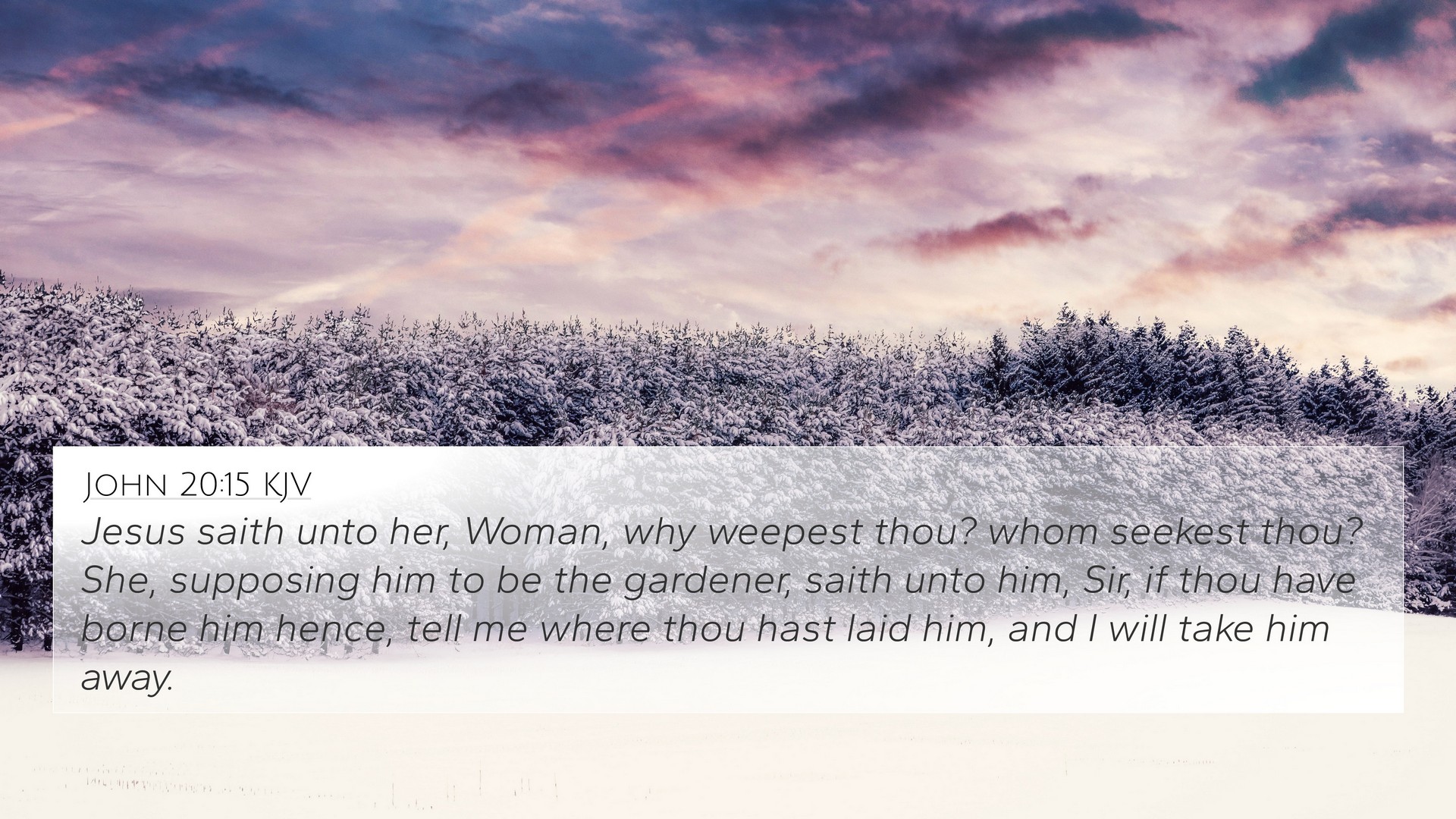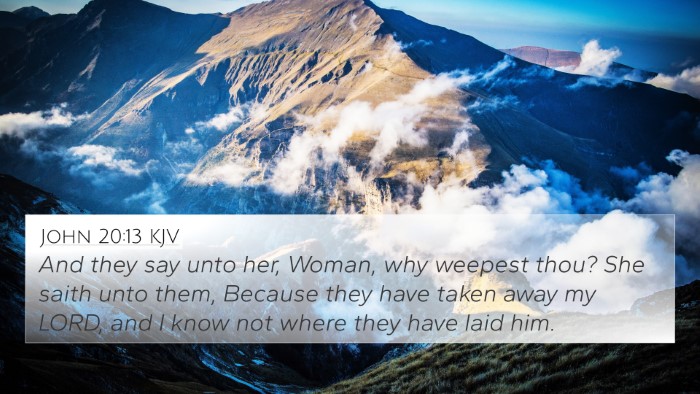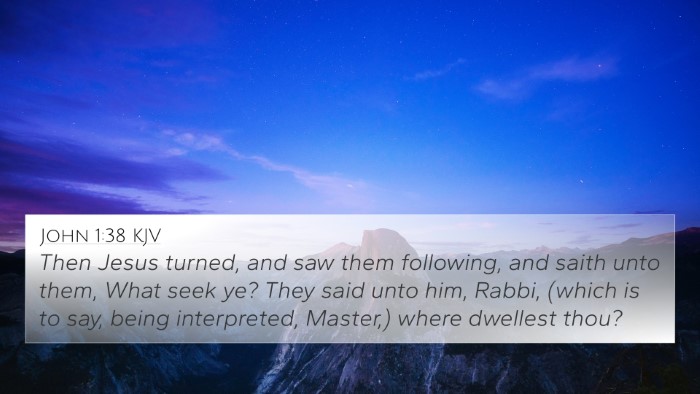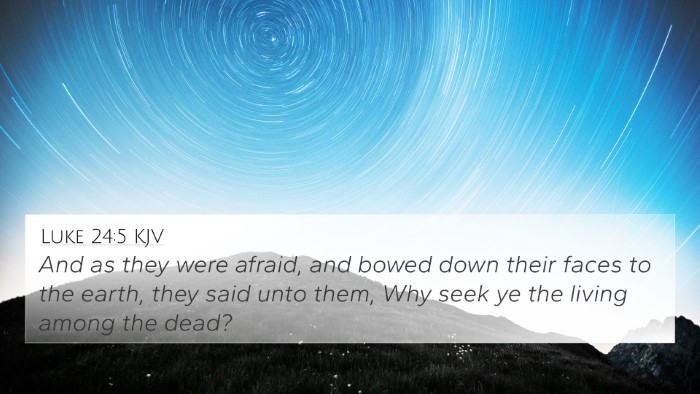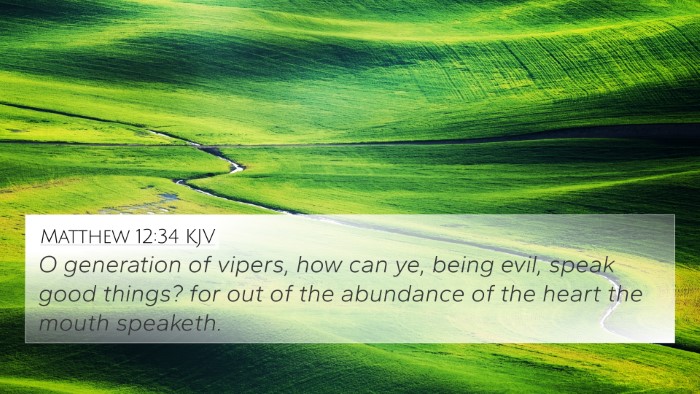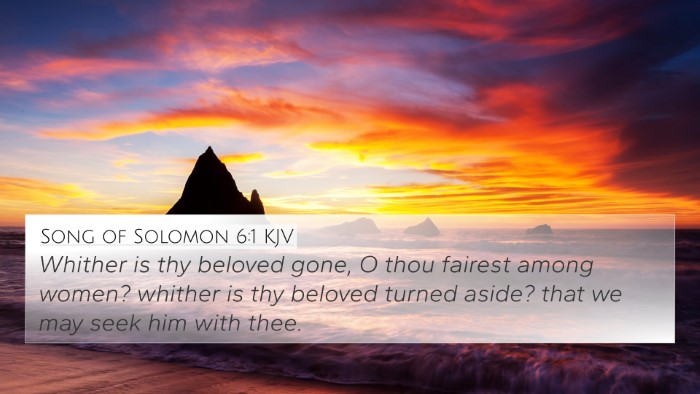Understanding John 20:15
Verse Text: "Jesus said to her, 'Woman, why are you weeping? Whom are you seeking?' She, supposing Him to be the gardener, said to Him, 'Sir, if you have carried Him away, tell me where you have laid Him, and I will take Him away.'" (John 20:15)
This verse captures a significant moment in the resurrection narrative. It illustrates not only the emotion of Mary Magdalene but also the tenderness and care of the resurrected Christ.
Verse Meaning and Commentary
The interpretations of this verse by prominent public domain commentators provide profound insights into its significance.
Matthew Henry's Commentary
Matthew Henry emphasizes the importance of Mary Magdalene's encounter with Jesus. He notes her deep sorrow and confusion, which are evident in her dialogue with Jesus. Henry points out that her joy would soon be restored upon realizing that she was speaking to the risen Christ. This moment encapsulates the transition from despair to hope, highlighting a key theme in the resurrection narrative.
Albert Barnes' Commentary
Albert Barnes adds that Jesus' question, "Why are you weeping?" reflects His compassion for human sorrow. He notes that Mary’s mistaken identity of Jesus as the gardener symbolizes a deeper misunderstanding of His identity and mission. Barnes suggests that this verse not only reveals the depth of Mary’s dedication but also serves as a reminder of the transformative power of recognizing Jesus in our lives.
Adam Clarke's Commentary
According to Adam Clarke, the inquiry made by Jesus serves as a pivotal point in the narrative. Clarke discusses the duality of Jesus’ resurrection, where He is no longer confined to earthly limitations. The physical presence of Jesus, who Mary does not immediately recognize, opens discussions about faith, recognition, and the broader understanding of Christ's role as Savior. Clarke also highlights the significance of the term “gardener,” which may signify new beginnings and restoration, akin to the themes found throughout scripture.
Cross References
John 20:15 connects with several other passages that highlight similar themes of sorrow, recognition, and revelation. Here are some pertinent Bible verses:
- Luke 24:15-16: "And it happened, as they conversed and reasoned, that Jesus Himself drew near and went with them. But their eyes were restrained, so that they did not know Him." - This verse illustrates another instance of Jesus’ unrecognized presence.
- Matthew 28:9: "And as they went to tell His disciples, behold, Jesus met them, saying, 'Rejoice!' So they came and held Him by the feet and worshiped Him." - This passage discusses acknowledgment and reverence towards the resurrected Lord.
- John 10:14: "I am the good shepherd; and I know My sheep, and am known by My own." - Here, Jesus identifies Himself in a nurturing role, highlighting the personal connection with His followers.
- Isaiah 53:3: "He is despised and rejected by men, A Man of sorrows and acquainted with grief." - This Old Testament verse establishes the theme of sorrow linked with the Messiah.
- John 14:27: "Peace I leave with you, My peace I give to you; not as the world gives do I give to you." - This sermon encapsulates the calming of hearts that follow acknowledgment of His presence.
- Psalm 30:5: "For His anger is but for a moment, His favor is for life; Weeping may endure for a night, But joy comes in the morning." - This connects deep sorrow with the subsequent joy of resurrection.
- Revelation 1:18: "I am He who lives, and was dead, and behold, I am alive forevermore. Amen." - This declaration reinforces Jesus’ victory over death, affirming His identity.
Thematic Connections
John 20:15 serves as a point of thematic connection within the Gospels and broader Biblical narrative. It illustrates the following themes:
- Recognition of Christ: The challenge of recognizing Jesus amid grief reflects an essential aspect of faith.
- Emotional Depth: The human experience of sorrow and yearning for connection is vividly depicted.
- Transformation: This moment shifts from despair to hope, encapsulating the resurrection's significance.
- Compassion: Jesus' inquiries highlight His empathy towards human emotions.
Conclusion
In summary, John 20:15 highlights the complexities and depths of human emotion through the lens of resurrection. The commentaries by Matthew Henry, Albert Barnes, and Adam Clarke enrich our understanding of this verse, connecting it with broader biblical themes of sorrow, recognition, and hope. Furthermore, the cross-references to other scriptures enhance our comprehension of the interconnectedness of the Biblical narrative and encourage a deeper exploration of scripture.
For those studying the Bible, utilizing tools for Bible cross-referencing can deepen understanding and facilitate a comparative Bible verse analysis. Methods such as cross-reference guides and Bible concordance are invaluable for uncovering connections between Bible verses. By identifying scripts and themes that relate to each other, one can experience a richer and more layered understanding of God’s word.
